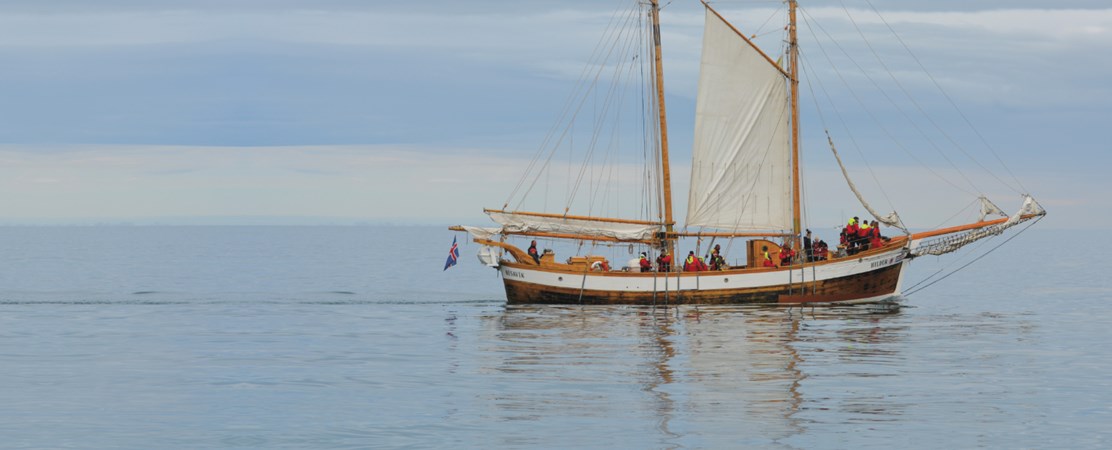Mobility Matters: Perspectives from Northern Tourism

By Patrick Maher, Lead of the UArctic Thematic Network on Northern Tourism, Associate Professor, Cape Breton University
Tourism is inherently a mobile activity, whether it is the one-off trip of a lifetime from the southern US to see northern lights in Iceland, a business trip from northern Canada across to the Nordic Arctic, or a family’s summer visit from Stockholm to their second home in Piteå. As illustrated in my recent work in the book The Interconnected Arctic, many visitors move throughout the Circumpolar North, and it is only set to increase, given China’s new Arctic policy.
As academics, both within the UArctic Thematic Network on Northern Tourism (TNNT) and outside of it, we try to connect our work with policy spheres, which allows us to make our research knowledge mobile. Recent project highlights include New Turns in Arctic Winter Tourism, funded by the Research Council of Norway; Sustainable Tourism in the Nordic Arctic, funded by Nordregio and other partners, and conducted in partnership with the UArctic Thematic Network on Global Ecological and Economic Connections in Arctic and Sub-Arctic Crab Fisheries; and Arctic Tourism in Times of Change, funded by Nordregio. All of these projects involve multiple partners from the 34 organizations in the TNNT, spanning nations and regions.
As a network we have always tried to make our teaching mobile, having students from North America experience the European Arctic and vice versa, but we have also tried to make it inclusive of southern partners. In 2015 a group of seven institutions across five Arctic states – Cape Breton University, UiT The Arctic University of Norway, University of Iceland, University of Lapland, University of Oulu, Umeå University and Vancouver Island University – were successful in receiving funds from the Norwegian Centre for International Cooperation in Education for a three-year period. This allowed us to pilot a sequence of joint master's courses on northern tourism. The project included a field course, two online courses, and mobility for the purposes of expert supervision. We created this program within the TNNT between 2010 and 2012 to add value to students’ existing graduate degrees – not as a substitute but rather a supplement, allowing them to experience different perspectives on the ground and in the virtual classroom. We knew that the program could be successful, but we needed the financial support to finally get off the ground.
In August 2016 we held a joint field course “Northern Tourism in Practice” in Eastern Finnmark, Norway with 33 students from 17 countries. Many of the students presented their experiences on their way home at the 5th International Polar Tourism Research Conference in Iceland. Some of these students continued into the pilot versions of our online courses and have since graduated with a UArctic certificate of completion.
We have managed to sustainably carry on with our teaching mobility, thanks to the in-kind contributions and enthusiasm of the partners involved. We have run joint field courses and online courses again through 2017–2019. More than 100 students have completed at least one course of the three, and ten have completed the entire program. Although we have tried to keep our courses as diverse and as full as in the first year (which had subsidies), this has proven difficult. Students are now supported in the field course by linking it to the Arctic Tourism in Time of Change project, and student numbers online remain stable.
Partners have also expanded the way in which their teaching links to other programs. The University of Lapland has designed an entirely new Master’s Degree on Northern Tourism around the three-course program operated by the TNNT. If applications are any indication, this will be a success with ten times the number of applications as there are spots for the September 2019 intake. As we have seen our network grow, we have also seen new collaborations begin. For example, as network lead I have taught courses on “Arctic Marine Tourism” and “Coastal Communities Moving from Extraction to Attraction” at the University Centre of the Westfjords in Iceland, in collaboration with members of the UArctic Thematic Network on Arctic Fisheries and Aquaculture.
Looking ahead, we are excited by the possibilities for continued teaching mobility, allowing full field courses to support the hands-on learning of the next generation of tourism scholars, augmented by online content. At the same time, we continue to see our research knowledge mobility expand amongst scholars, industry and communities. All of this development matches the increasing mobility of tourists themselves, and the growing pressure that development creates on Arctic environments and societies.
